
"Marais" means marsh or swamp and before landowners drained their land for more farmland, the Grand Marais was 500 feet across in certain sections and only one to two feet deep (above). When landowners began taming the Grand Marais, water levels increased and would then drain south. The building water drainage began to cut a path. Over time the path became more defined and eventually the Grand Marais became a bayou within banks and was dredged regularly.
In the Hathaway area, the Grand Marais was first settled by Don Luis Garrique in 1859. Lufroi Landry about the same time, possibly earlier. Both of their families appear in the 1860 Federal Census in a location consistent with where they would homestead. Both Don Luis and Lufroi are listed in the 1860 Louisiana Agricultural Census as well. The names that surround them in both are identical. Don Luis is listed with 20 acres improved, 20 acres unimproved. His assets included $300 in cash, $60 worth of implements and machinary, and 570 head of cattle. Lufroi is listed with 60 acres of improved land and 260 unimproved. His assets included $7500 in cash, $350 worth of implements and machinary, and 550 head of cattle.
1860 Census - Calcasieu Parish - Page 40 and 41
20 July 1860
Don Louis Garre-45-M-W-Farmer(trade)-600-750(assets)-La.(born)
Eloise Garre -35-F-W-La.
Eliza Garre -14-F-W-La.
Rosalia Garre -12-F-W-La.
Louis Garre -9-M-W-La.
Roseline Garre -8-F-W-La.
Don Louis Garre -5-M-W-La.
Marie Garre -3-F-W-La.
Simeon Garre -1-M-W-La.
Lufroi Landry-58-M-W-Farmer-1500-10,000-La.
Modeste Landry -45-F-W-Spinner-La.
Alice Landry -18-F-W-La.
Frozin Landry -16-F-W-La.
Rosalie Landry -14-F-W-La.
Marie Landry -12-F-W-La.
Ozime Landry -10-M-W-La.
Don Luis and the widow of Lufroi both homesteaded in January of 1869. By the 1870 Census, a few other families had settled that would make homestead claims in the Grand Marais area:
1870 Census - Calcasieu Parish (2nd Ward) -Page 19
10 June 1870
Garrigues, Don Louis 56 M W farmer 200 500 La.
Eloise 40 F W K H La.
Louis 19 M W farm laborer La.
Roselia 17 F W K H La.
Marie 14 F W K H La.
Duplessis 13 M W farm laborer La.
Simeon 11 M W farm laborer La.
Modeste 9 F W La.
Elizabeth 19 F W La.
Landry, Lufroid, Mrs 70 F W farmer 300 La.
Ozeme 19 M W farm laborer La.
Marie 21 F W K H La.
Perkins, Terence 39 M B farmer 60 60 La.
Henriette 43 F M K H La.
Marcelitte 15 F M K H La.
Charles 12 M M farm laborer La.
Valsin 11 M M La.
William 9 M M La.
Terence 7 M M La.
Lopez, Victorin (Francois) 44 M W farmer 200 400 La.
Arthemise 36 F W K H La.
Marie 17 F W K H La.
Francois 14 M W farm laborer La.
Julie 13 F W K H La.
Leontine 10 F W La.
Eve 8 F W La.
Clemeine? 6 F W La.
Alexina 2 F W La.
Deresin 1 M W La.
Below is a chart showing the original homesteaders of Grand Marais (section, acreage, cost, and date of sale are included).

[Editor's note: The "Original Settlers of Grand Marais" image needs work. For now, this is as large as I can make it. Please use the "Zoom" function on your browser to enlarge]
Don Luis Garrique was the son of Juan Thomas Francois Garrido, a descendent of Juan Garrido, who immigrated from Spain in 1777 under a grant from King Carlos III. Don Luis was born in St. Martinville, Louisiana, February 12, 1815. He married Eloise Modest Landry on April 4, 1845 in Opelousas Church. His wife was a descendent of Acadian immigrants of the 1760's. Don Luis and his wife lived their early-child-rearing years in the Grand Coteau-Opelousas area. They would have eight children there; five of them boys; their first child was born in 1846; their ninth child, a girl, was born on their Grand Marais homestead in November 1861.
The store was on a stage coach trail running north-south from Andrus Cove (Lake Arthur) to China (Elton) and was on an off-shoot trail from the main trail running from Welsh to Opelousas via the Bayou Nezpique. This off-shoot trail continued east and intersected with the several trails running north/northwest that intersected with other trails running north/northeast from Jennings through the Hathaway prairies. Duplisse Gary, another son of Don Luis Garrique, hired a tutor in his home. Over time he invited area children to attend school sessions. Once the need was clear, land was set aside and the community built the first one-room school house in the Hathaway area. This school became part of the Imperial Calcasieu school system. During its existence, the Grand Marais school had two locations. The first (left, looking north) was nearly a stone’s throw from the Grand Marais Bayou on the Duplisse Gary farm, which would now be about four miles north of Jennings about a half-mile west of Highway 26 on Koll Road.
Duplisse Gary, another son of Don Luis Garrique, hired a tutor in his home. Over time he invited area children to attend school sessions. Once the need was clear, land was set aside and the community built the first one-room school house in the Hathaway area. This school became part of the Imperial Calcasieu school system. During its existence, the Grand Marais school had two locations. The first (left, looking north) was nearly a stone’s throw from the Grand Marais Bayou on the Duplisse Gary farm, which would now be about four miles north of Jennings about a half-mile west of Highway 26 on Koll Road. In the Winter of 1925, the school was moved a mile north on a log sled to the Moise Doucet farm (right, looking east). Children attending the Grand Marais school had last names of Doucet, La Bauve, LeJuene, Koll, Dommert, Gary, Landry, St. Germaine, Lopez, and LeVergne, among others and were taught by Esther Toener and Ethel Ritter, and later by Eliza Faulk.
In the Winter of 1925, the school was moved a mile north on a log sled to the Moise Doucet farm (right, looking east). Children attending the Grand Marais school had last names of Doucet, La Bauve, LeJuene, Koll, Dommert, Gary, Landry, St. Germaine, Lopez, and LeVergne, among others and were taught by Esther Toener and Ethel Ritter, and later by Eliza Faulk.
In 1928, Lois Gary started First grade at the Grand Marais school. She was the great-granddaughter of Don Luis Garrique. Simeon Gary was her Great Uncle. Her grandfather was Don Luis' sixth child. Her father was Alexis Gary (who lived April 1881 to December 1936).
During her time at the Grand Marais school, Mrs. Lois remembers the school house was divided into two rooms and there were two teachers, Ms. Ruth Bibbens and Ms. Florence Tutell. There were three classes in each classroom throughout the day, with a morning and afternoon recess, and an hour lunch recess in the middle of the day. She played games like hopscotch, jump rope, dodge ball, and even some baseball during recess. For lunch, she usually ate leftovers from supper the night before.
Mrs. Lois also went to the Hathaway school through the 7th Grade. Her teacher at the time was Mr. Frank Bryan. He had grown up in Buckey, Louisiana (northwest of Alexandria) and began teaching there when he was 17 years old for no salary. Instead, his payment was to be taught high school subjects from the teacher. From there it was on to to State Normal school in Natchitoches for a twelve-week certification program. His first salaried job was in Rapides Parish where he taught one classroom with several children at each grade level through the Seventh Grade. Not long after this, he moved to the Hathaway area to be closer to his brother. His experience in Rapides certainly must have helped him at the Grand Marais school. And it was not long before he was assigned to teach in Jennings. When he left, Mrs. Lois followed him, but there were many more kids at the schools there. Mrs. Lois remembers the larger crowds made her lose interest in school and she did not continue. Instead she stayed home the help her family on the farm.

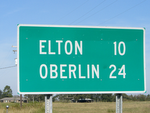
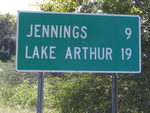
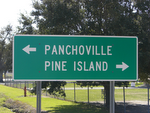
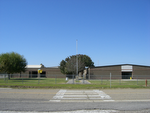
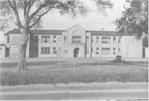

1 comment:
Interesting to know.
Post a Comment